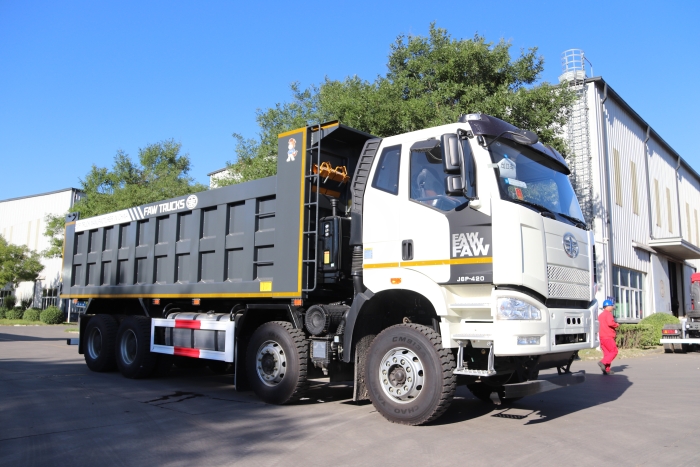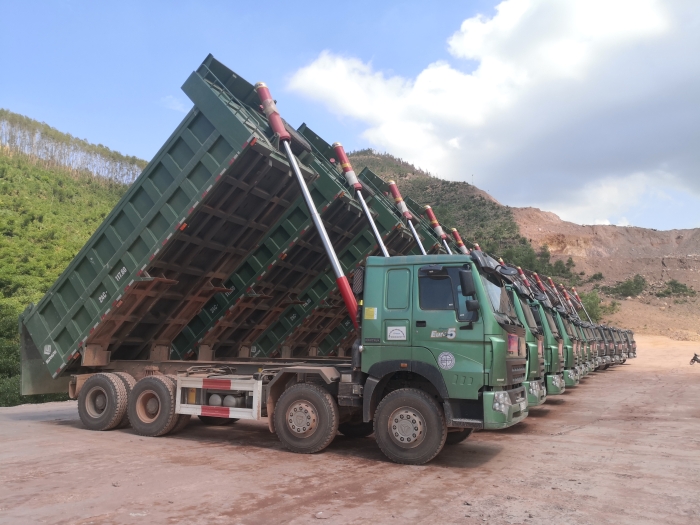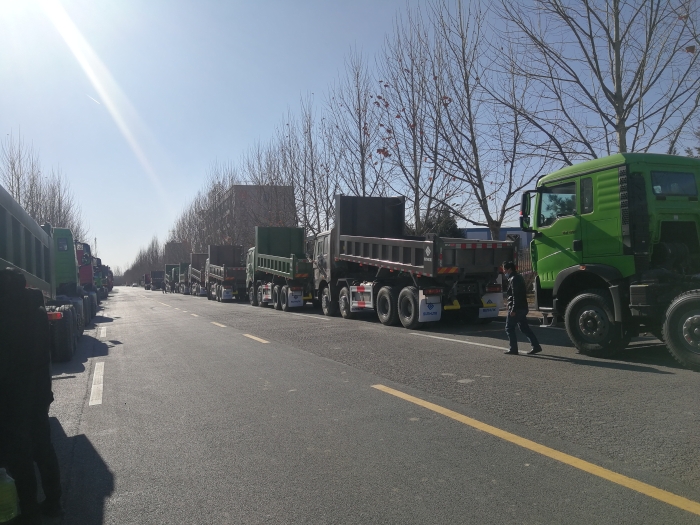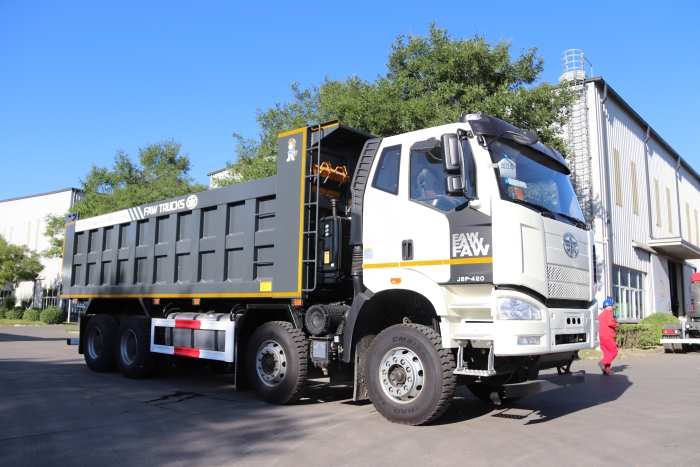- PRODUCTS
- SOLUTION
- SERVICE
- NEWS
- ABOUT US
The main differences between a 19m and 28ft semi trailer lie in their size, load capacity, design, cost, and suitability for different transportation needs.
The length of a semi-trailer is a critical factor in its utility and legal compliance. A 19-meter trailer, equivalent to approximately 62.34 feet, offers substantial cargo space, often used in regions with more lenient road regulations. On the other hand, a 28-foot semi-trailer, measuring about 8.53 meters, is more suited for tighter urban environments where maneuvering larger vehicles is challenging. This shorter length can impact the volume of goods transported, making it essential for businesses to consider their typical cargo sizes and delivery routes.

Besides length, the height and width of semi-trailers also play a vital role in their suitability for different cargos. Typically, the standard width for both is around 2.6 meters (8.5 feet), maximizing road space usage while adhering to legal limits. However, the height can vary significantly, affecting the types of goods that can be transported. Taller trailers accommodate higher stacks of goods, whereas shorter ones are better for heavy, dense materials that don't stack well.
The load capacity is a function of both size and construction. Generally, a 19-meter semi-trailer can carry a heavier load due to its larger size, often exceeding 30 tons, depending on the design and materials. The 28-foot trailer, although smaller, is designed for efficiency in dense urban areas and might carry less, with capacities often around 20 to 25 tons. Businesses must weigh the trade-off between capacity and maneuverability when choosing between these sizes.
The structure of a semi-trailer significantly impacts its functionality and durability. The 19-meter trailers often feature a more robust frame to support their longer length and heavier loads. They might include reinforced flooring and side walls to prevent warping or damage. In contrast, 28-foot trailers prioritize weight savings and maneuverability, with lighter materials and a design focused on urban delivery efficiency.
Materials play a crucial role in the performance and longevity of semi-trailers. For longer trailers like the 19-meter ones, manufacturers often use high-strength steel or aluminum to ensure structural integrity without excessive weight. The 28-foot trailers, being shorter, can afford to use lighter materials, like composites, to further reduce weight and enhance fuel efficiency.
The design philosophy of a semi-trailer reflects its intended use. The 19-meter semi-trailer is designed for long-haul transport, focusing on stability, durability, and load capacity. In contrast, the 28-foot trailer is tailored for urban environments, where agility, fuel efficiency, and ease of loading/unloading are paramount. This results in different axle configurations, suspension systems, and even loading mechanisms.

Semi-trailers must adapt to the diverse needs of cargo transportation. The 19-meter trailers, with their expansive length, excel in transporting voluminous items such as lightweight goods, furniture, and large machinery. Their spacious interiors are ideal for cargos requiring more horizontal space. Conversely, the 28-foot trailers, shorter in length, are perfect for dense urban areas where smaller, more frequent deliveries are common. These trailers are often chosen for goods like packaged food, retail products, and other commodities where volume is less of a concern than maneuverability.
The performance of a semi-trailer is heavily influenced by the transport environment. In open highways and long-distance routes, the 19-meter trailers shine due to their stability and capacity, making them a go-to choice for cross-country logistics. Their design allows for smooth handling at higher speeds and better efficiency over long distances. On the other hand, the 28-foot trailers are champions in urban settings. Their compact size allows for easier navigation through city streets, making them ideal for door-to-door deliveries and operations in confined spaces.
Feature | 19-Meter Semi-Trailer | 28-Foot Semi-Trailer |
Cargo Type | Voluminous and lightweight items | Packaged goods and urban deliveries |
Environment Suitability | Long-distance, open highways | Urban, confined spaces |
Advantages | High capacity, stable at high speeds | Maneuverable, efficient in cities |
By understanding the unique strengths of each trailer size, businesses can make informed decisions, ensuring that their fleet aligns with their logistical needs and operational environments.

When considering the purchase of a semi-trailer, cost is a critical factor. The 19-meter trailers, due to their larger size and enhanced features for long-haul transport, generally command a higher price tag. They are a significant investment, with costs ranging significantly based on features and materials. In contrast, 28-foot trailers are more affordable, reflecting their smaller size and the materials used. They provide a cost-effective solution for businesses focusing on urban transportation.
Operating costs, including fuel efficiency and maintenance, are pivotal in the long-term economic assessment of semi-trailers. 19-meter trailers, while offering larger cargo space, tend to consume more fuel due to their size and weight, especially when fully loaded. Moreover, their maintenance can be costlier due to the complexity of their design and the wear and tear from long-distance hauls. The 28-foot trailers, being smaller and lighter, are more fuel-efficient – a key advantage in urban settings where frequent stops are common. Their maintenance costs are generally lower, as they are designed for simpler, more repetitive urban routes.
Aspect | 19-Meter Semi-Trailer | 28-Foot Semi-Trailer |
Purchase Cost | Higher (due to size & features) | Lower (more compact & simple) |
Fuel Efficiency | Lower (bigger size, heavier loads) | Higher (lighter, more urban trips) |
Maintenance Cost | Higher (long-haul wear & tear) | Lower (simpler design, less wear) |
Businesses need to consider these costs against their specific transportation needs. A larger initial investment in a 19-meter trailer might be justified by the need for high-volume, long-distance transport, while the cost savings from a 28-foot trailer align better with frequent, short urban deliveries.
Understanding market trends and user preferences is crucial for aligning business strategies with consumer demands and industry developments.

The demand for different semi-trailer sizes varies based on regional transportation needs and regulatory environments. In regions with expansive road networks and less stringent size restrictions, such as in many parts of the United States and Australia, the 19-meter trailers are highly popular due to their efficiency in long-haul transportation. These regions value the high-volume transport capabilities of larger trailers. Conversely, in densely populated areas with stricter size regulations, like many European and Asian cities, 28-foot trailers are more in demand. Their smaller size is ideal for navigating narrow streets and adhering to urban transport regulations.
User preferences often reflect the operational environment and the nature of the cargo. Operators who prioritize long-distance haulage, carrying lightweight but bulky items, generally prefer 19-meter trailers for their high capacity and stability. On the other hand, businesses focusing on urban distribution, requiring frequent stops and easy maneuverability, tend to choose 28-foot trailers. These trailers' smaller size and greater fuel efficiency align well with the needs of urban logistics.
Aspect | 19-Meter Semi-Trailer | 28-Foot Semi-Trailer |
Preferred Regions | Long-haul routes, less urbanized areas | Urban areas, regions with size restrictions |
User Preferences | High-volume, long-distance transport | Urban distribution, frequent stops |
These trends and preferences highlight the importance of choosing the right semi-trailer size based on the specific use case. Aligning the choice of trailer with market demand and user preferences ensures operational efficiency and economic viability.